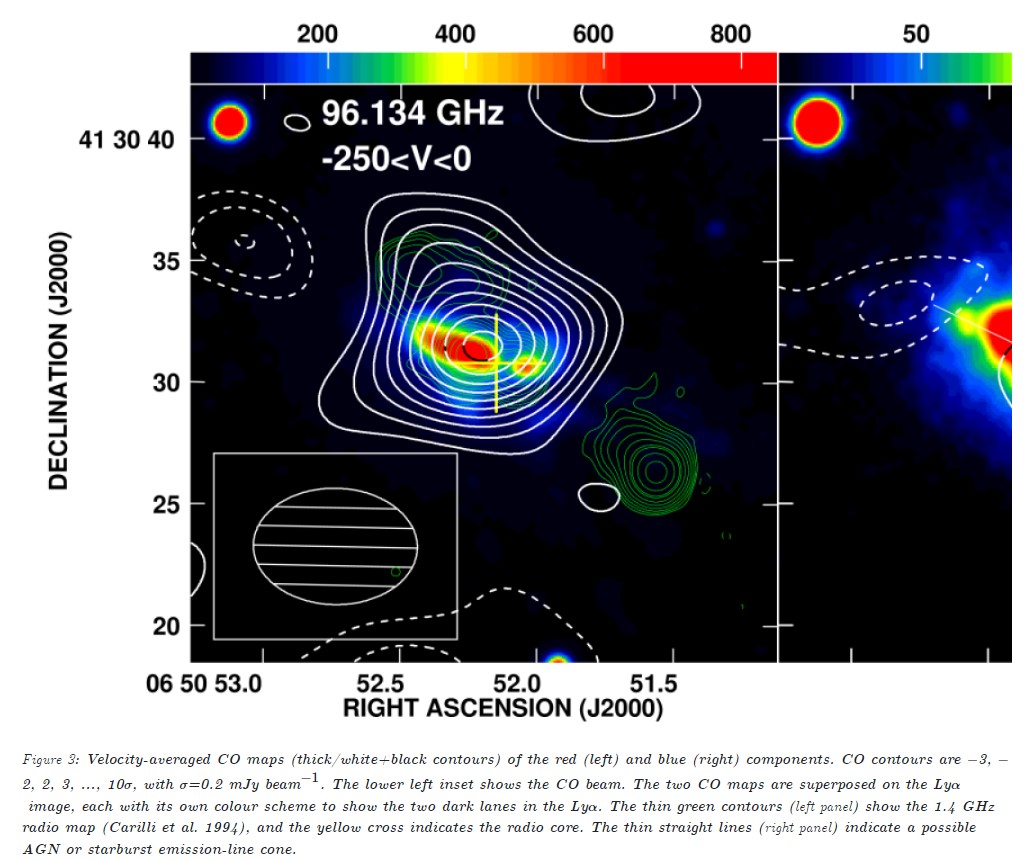The findings of galaxy 4C 41.17 provide observational evidence supporting hypothetical cosmological models and offer new insights into the origins of the cosmic materials that enable galaxy and star formation.
Galaxies grow and evolve by accreting gas, either in mergers with other galaxies or from streams of cold molecular gas that thread through the intergalactic medium. Simulations speculate that this latter type of accretion, also known as cold stream accretion, may be a key mechanism driving the observed high star formation rates and rapid development of galaxies early in the history of the Universe. Due to their elusive nature, the physics underlying cold accretion streams are not known and it has been challenging to observe and confirm the existence of such streams feeding massive galaxies.

Using ALMA, Bjorn Emonts and colleagues mapped the atomic carbon gas surrounding Galaxy 4C 41.17, a radio galaxy in the early Universe at redshift 3.8. To maximize the radio telescopes surface brightness sensitivity, Emonts et al. used ALMA’s most compact and low-resolution configuration, which likely helped them detect a cold molecular stream where past studies haven’t, the authors say.
The submillimeter observations revealed a narrow stream of cold gas extending at least 100 kiloparsecs (~326,000 lightyears) outside the galaxy and into the intergalactic medium – a distance several times larger than the galaxy it appears to be feeding.
According to the authors, the observations are consistent with cold gas streams predicted by cosmological models, and the mass of the cold atomic gas being funneled into the massive galaxy could fuel star formation for more than 500 million years.






Comments